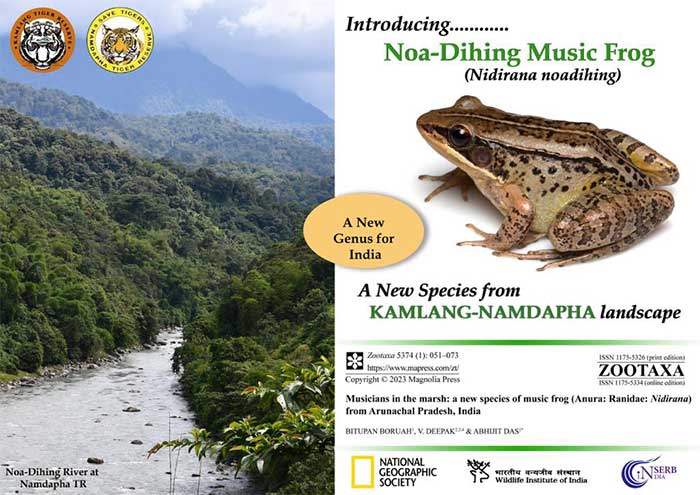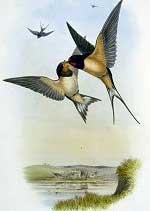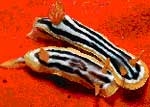Scientists Discover New Frog Species with Unique Call Hidden in Indian Marsh Vegetation.
Recently, Indian biologists along with researchers from the University of Wolverhampton discovered a new amphibian species in the Namdapha-Kamlang Marshlands of Arunachal Pradesh, in northeastern India.
The newly identified frog species has been named Nidirana noadihing, after the Noa-Dihing River, which is located near the site where the animal was discovered and collected for research.
Dr. Deepak Veerappan, a herpetologist in the research team, stated: “This newly discovered frog species has a body length of up to 6 cm, with horn-like nodules on its back and a pale cream stripe down the center of its body, featuring irregularly shaped and sized spots.”
According to this study, Nidirana noadihing has a throat, forelimbs, thighs, and shins that are light brown, with a slight pink hue. Its groin and the outer surface of its thighs are pale yellow with irregular dark patches, while the chest and belly exhibit a creamy color with a hint of yellow.

The frog with a unique call has been found in northeastern India.
Dr. Veerappan further explained: “Initially, we heard a call from a marsh near the Noa-Dihing River, which resembled the quacking sound of a duck, lasting two to three notes. However, it turned out to be the call of the Nidirana noadihing frogs, both males and females exhibit this type of call.”
To reach this conclusion, scientists collected five Nidirana noadihing frogs, including three males and two females. The researchers noted that Nidirana noadihing can be distinguished from other species by its size, oval toe pads, the presence of warty nodules on its back, and its strange duck-like call.
This amphibian species inhabits marshy areas, where male frogs create round pits to attract mates. However, experts’ understanding of the life cycle of Nidirana noadihing is still not comprehensive. The reproductive behaviors, egg-laying, and parental care abilities of these frogs remain a mystery, paving the way for more intriguing research directions in the near future.





















































